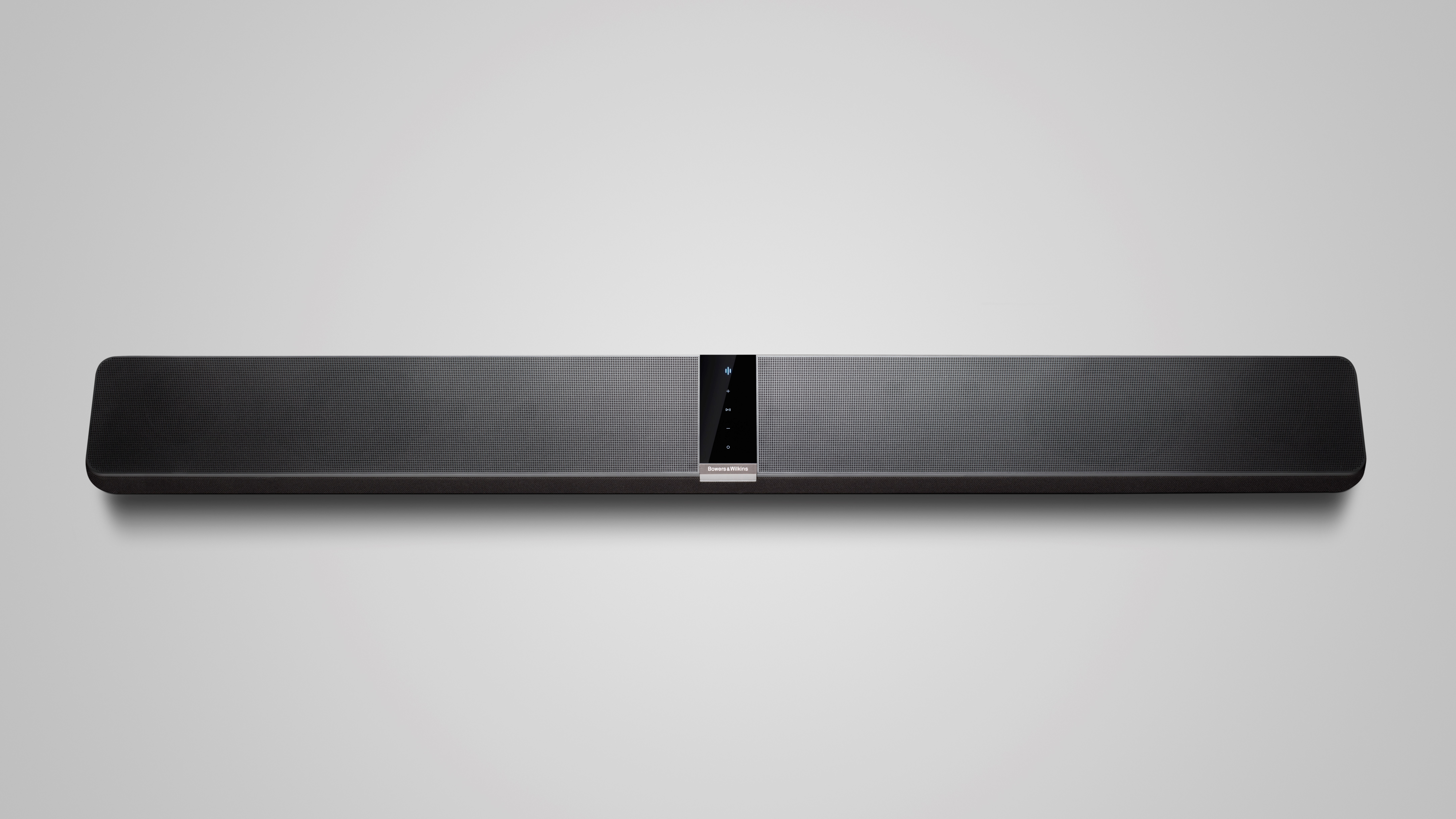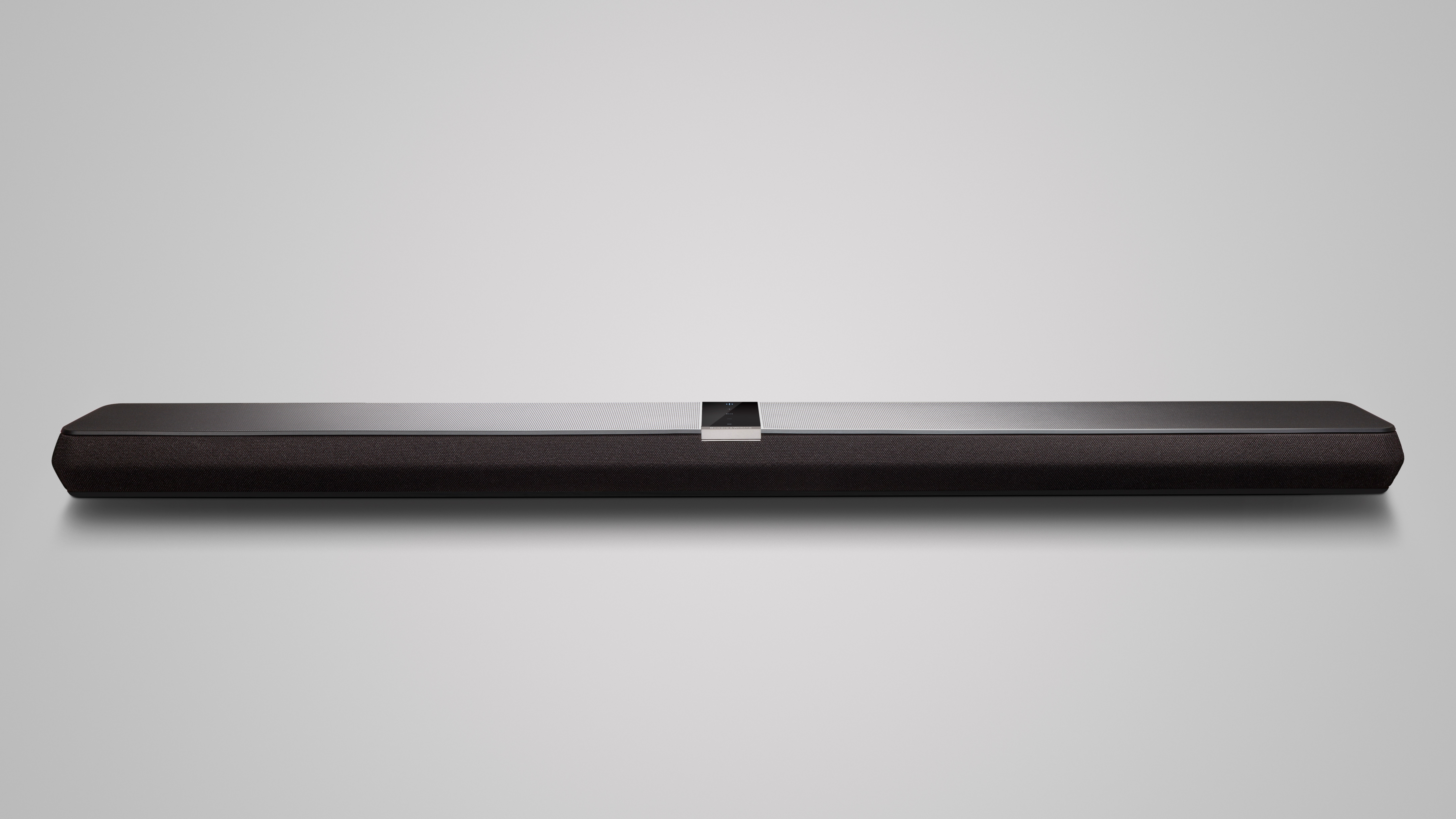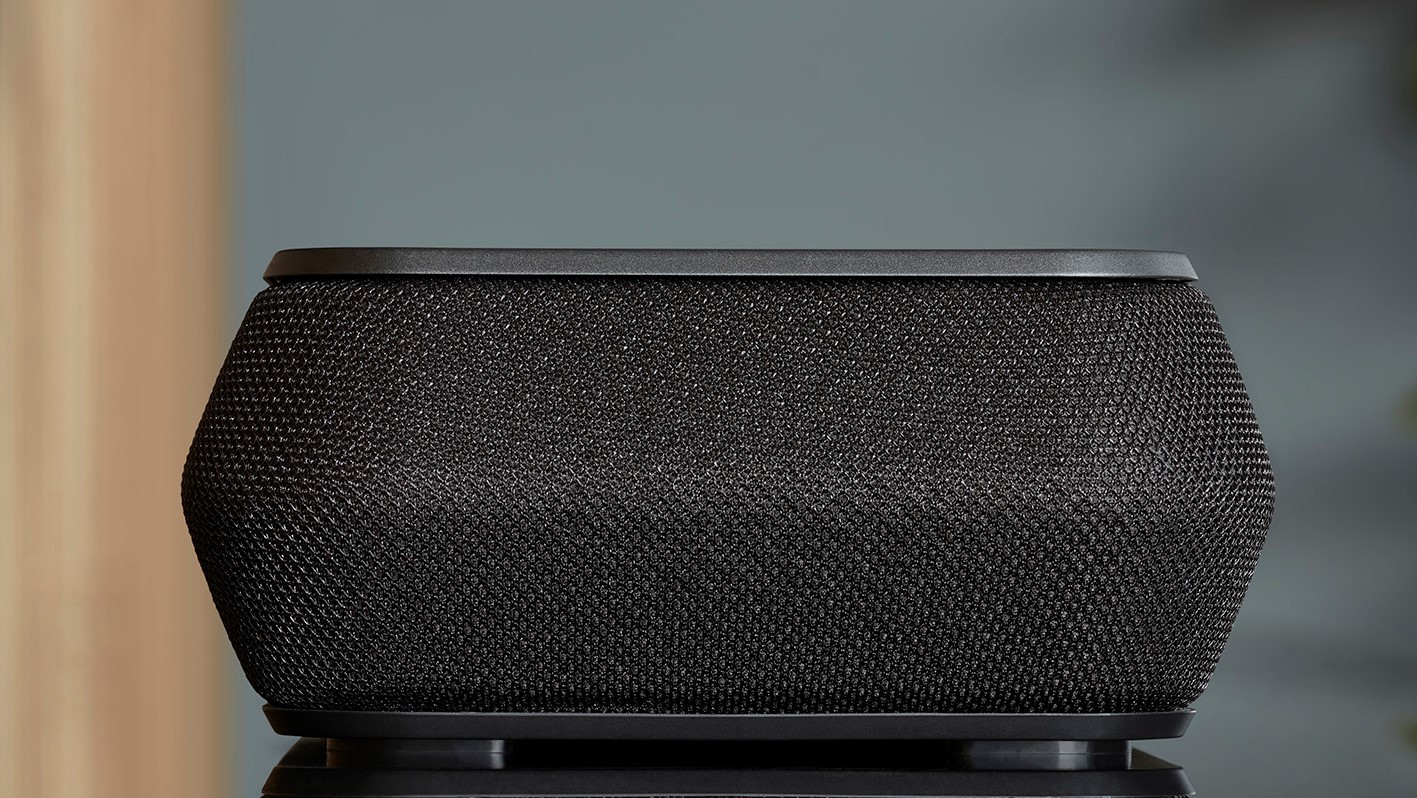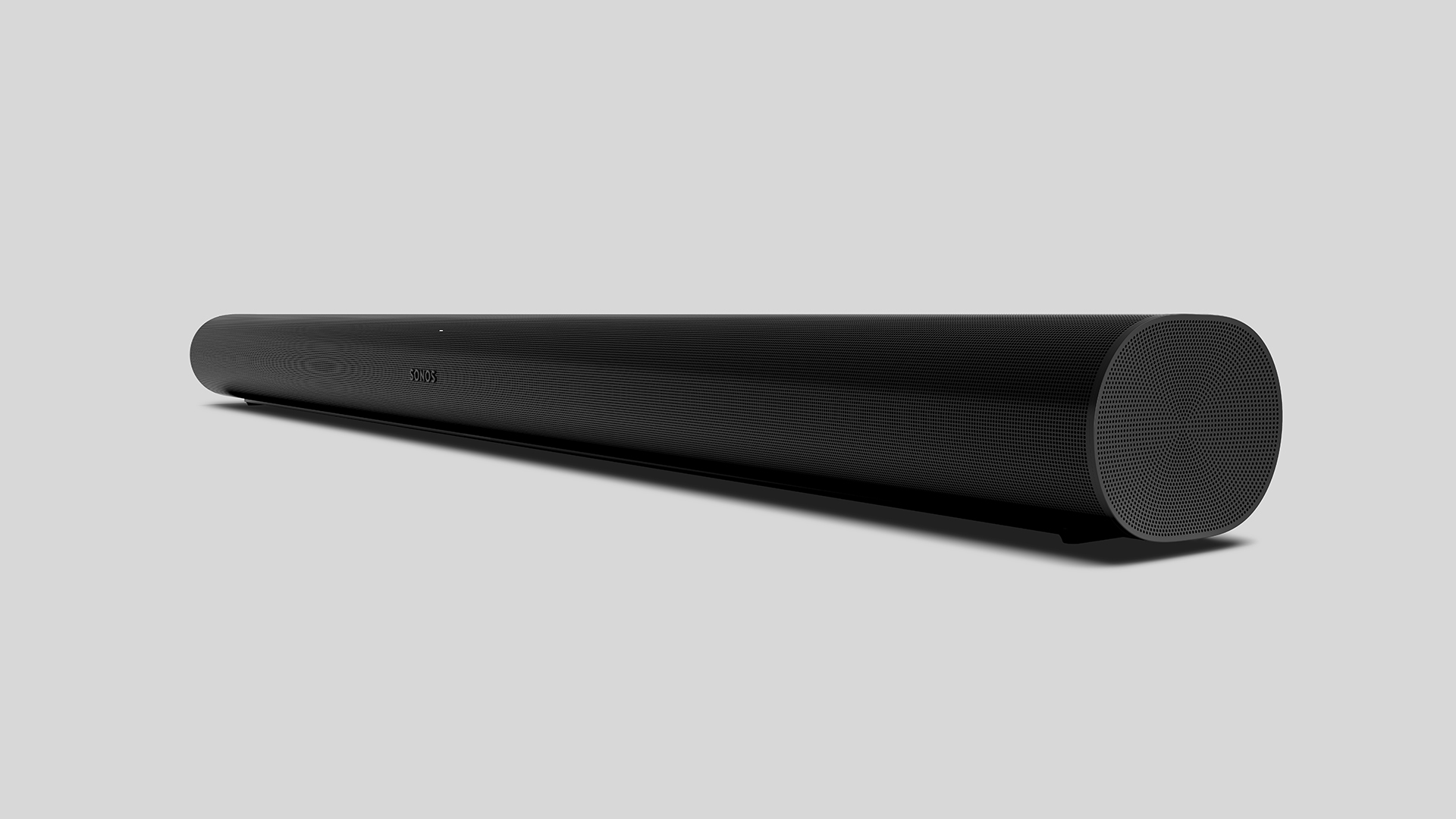Sonos Arc vs B&W Panorama 3: which Dolby Atmos soundbar is better?
Which is the best premium Dolby Atmos soundbar for you? Read on as we compare two prime contenders.

Are you looking to give your home cinema sound a lift with a premium Dolby Atmos soundbar but can't decide whether to spend your hard-earned cash on the B&W Panorama 3 or the Sonos Arc? Well, you're in luck. Not only have we tested both of these premium soundbars, but we've also done a side by side comparison, so we're well-placed to reveal their pros and cons. Read on for the ultimate Sonos Arc vs Bowers & Wilkins Panorama 3 comparison...
Let's start with Bowers & Wilkins' offering. The Panorama 3 was launched in March 2022, as historic brand B&W's first-ever Dolby Atmos speaker. It's appealingly conceived to offer users a simple all-in-one solution for room-filling, immersive sound, with no additional surround speakers or sub needed.
The Sonos Arc meanwhile is the elder statesman of the two Atmos soundbars. It debuted back in June 2020 and, like the Panorama 3, supports Dolby Atmos surround sound with upward-firing drivers. In our initial review we found it supremely capable, producing a detailed, weighty sound, that earned it a What Hi-Fi? award two years in a row.
We're fans of both products and the different approaches each brand has taken, but let's take a closer look at how these premium soundbars compare in terms of design, price, features and performance...
- Check out today's best soundbar deals
Sonos Arc vs B&W Panorama 3: price

We tested the Panorama 3 at £899 ($999, around AU$1666). It's the more recent of the two soundbars, so discounts are likely to be harder to find for now. But as a completely stand-alone product, there are no additional surround speakers or subs to be tempted by, and a wall mounting bracket is included in the box.
The Sonos Arc has been on sale for nearly two years and, during that time, has undergone a price increase meaning it now goes for £899 ($899, AU$1499). However, several online retailers regularly have it available at its original launch price of £799 ($799, AU$1399).
To expand the Arc into a more traditional surround set-up users can add two One SL rear speakers (£358, $358, AU$538) and a Sonos Sub (£699, $699, AU$999). For wall mounting, a bracket is available from Sonos for £69 ($79, AU$99), while cheaper, unofficial rigging, can be purchased elsewhere online.
The latest hi-fi, home cinema and tech news, reviews, buying advice and deals, direct to your inbox.
*Winner* Tie
Sonos Arc vs B&W Panorama 3: design

The Sonos Arc is specifically designed to partner with bigger TVs, hence its width measurement of 114cm (just a bit wider than a typical modern 50-inch TV). It’s 8.7cm tall and 12cm deep, but its curvy design helps mask its dimensions, making it appear deceptively svelte. Available in black or white polycarbonate, and with an integrated perforated grille, the Arc is easy to keep clean and can be matched to your decor.
At 121cm wide, the Panorama 3 is aimed at 55-inch TVs and larger. It's deeper than the Arc at 14cm, but with a 6.5cm ultra low profile build, it's designed to sneak beneath TVs without blocking the screen. The convex front face is covered in a wrap-around cloth, while the top surface features a plastic grille and capacitive ‘hidden until lit’ buttons in the centre.
Both models have physical touch-sensitive controls, and neither includes a physical remote, relying instead on app control. The Arc can also be controlled through Alexa and Google Assistant while the Panorama 3 only boasts the former.
If you have a low TV, the Panorama 3 could be a better option, though the area of its overall footprint is slightly larger than the Arc. Both models look suitably premium but the Arc's unique form and colour options just give it the edge.
**Winner** Sonos Arc
Sonos Arc vs B&W Panorama 3: features

The Sonos Arc's Dolby Atmos soundfield is generated by 11 Class D digital amplifiers (Sonos doesn't disclose the wattage) that power 11 custom drivers in a 5.0.2 configuration.
Eight of those drivers are elliptical woofers evolved from those in the Sonos Beam - four along the front, two on top and one in each end - while the other three are silk-domed tweeters that are all built into the front but with two firing diagonally into the room for surround sounds.
Packed inside the Panorama 3 are 13 individual driver units powered by ten 40 Watt amplifiers in a 3.1.2 configuration. Across the front, in a typical LCR arrangement, each channel group includes twin 5cm midrange drivers partnered by decoupled 19mm titanium-dome tweeters. Two angled 5cm drivers are on the top to deliver height effects.
Unusually, the upper surface also houses twin 10cm subwoofers mounted in an acoustic enclosure. Few soundbars include dedicated bass channel drivers, let alone ones of this size, and Bowers & Wilkins claims that by placing them in this way, the Panorama 3 can achieve a "deep, extended bass with no need for an external subwoofer".
When it comes to set-up, the Sonos Arc uses Trueplay to measure how sound reflects off your walls. The software fine-tunes the speaker to achieve the best performance according to the shape of your room. These settings can be toggled on or off in the S2 app where there is also a 2-band EQ, a 'loudness' mode that compensates for perceived loss of certain frequencies when listening at low volumes, a speech enhancement mode, a night time mode and individual volume control for the height drivers.
The Panorama 3 doesn't offer any room calibration but its app includes two sliders for treble and bass control.

As mentioned above, the Sonos Arc can also be supplemented with additional surrounds or a subwoofer while the Panorama 3 is only available as a stand-alone system. The Arc can also be fully integrated into Sonos' extensive wireless eco-system as part of a multiroom set-up.
At launch, the Panorama 3 doesn't have multi-room capabilities, however, Bowers & Wilkins say that this is planned for introduction in the near future and will make it compatible with older Panorama soundbars, Zeppelins or Formation products for whole home wireless streaming.
Whichever soundbar you choose, you won't be short of connections. Both are wi-fi enabled, with ethernet ports, and support HDMI eARC, Apple AirPlay 2 and Spotify Connect. Neither has HDMI passthrough but one feature that the Panorama 3 offers that the Sonos doesn't is Bluetooth with aptX Adaptive.
It's also worth noting that both the Sonos S2 app and the Bowers & Wilkins Music app offer playback for high-res audio at 24-bit/48kHz for the Arc and 24-bit/96kHz for the Panorama 3.
When it comes to format support the Panorama 3 offers Dolby Atmos, Dolby Digital True HD, Dolby Digital+ and LPCM. The Arc also includes support for Multi-Channel PCM, DTS Surround. Unfortunately, neither offers decoding for Dolby Atmos rival DTS: X at present.
Confirmation of Dolby Atmos playback is given on the 'Now Playing' screen of both apps, while the Arc also gives more information regarding other formats such as 5.1. The Panorama 3 automatically up-mixes formats from 5.1 and above to pseudo-Atmos but doesn't indicate when this is happening or what the source audio is.
Both soundbars share a lot of commonalities but each has its own unique appeal. The built-in woofer of the Panorama 3 is a welcome addition but the Sonos Arc has side-firing drivers and more functionality at present. It can also be enhanced into a true surround set-up and easily expanded into a multi-room system.
**Winner** Sonos Arc
Sound

The Sonos Arc sounds exceptionally spacious and weighty for a device of its size, stretching right across the front of our test room, with excellent separation as well as depth, precision, authority and crystal clear dialogue.
It uses Dolby's 3D sound technology to great effect. With a recent software update adding functionality to adjust height volume via its mobile app, the Arc delivers one of the most convincing Atmos presentations of any soundbar at this price (and even a few more expensive options). Furthermore, its side drivers project audio to either side of the listening position, bringing a touch of surround sound to proceedings without sounding overly processed or distracting.
Despite not having a dedicated sub-channel driver, the Arc handles itself well when faced with big, bassy audio, maintaining careful restraint with any frequencies beyond its reach. As with almost all soundbars, there's a slight lack of directness to music, but that's really our only criticism of the Arc's sound. In fact, the Arc's slightly sanitised approach does at least make it a more consistent, enjoyable performer across genres and different types of music.
The B&W Panorama 3's woofers are put to excellent use, adding rich, deep bass extension to explosive action sequences and soundtracks. While you’re not going to get cinematic levels of resonant, rumbly sub, it's well controlled, adding effective impact that is proportionate and engaging.
Elsewhere the Panorama 3 delivers a detailed, tactile, dynamic sound that's capable of filling a large room. However, dialogue can sometimes sound recessed and the soundfield isn't as extensive, upward and outward, as we'd like. Of course we don't expect any soundbar to deliver height in the way overhead speakers do, but the Arc’s performance is much stronger and more precise in comparison.
Musical delivery with the Panorama 3 is a bit of a mixed bag, too. While it's relatively capable in gentler acoustic and classic tracks, when things get busy, we find it can sometimes struggle to maintain its composure, becoming cluttered and unbalanced.
In a perfect world, we'd like to combine the responsive bass handling of the Panorama 3 with the Arc's impressive height projection, expansive soundstage, organisation and sparkling dialogue.
But for now, if you’re looking for the all-round best-sounding Dolby Atmos soundbar at this price, we’d suggest the added reach, transparency, separation and musicality of the Sonos Arc make it a more immersive and consistent performer.
**Winner** Sonos Arc
Verdict

**Overall Winner** Sonos Arc
There's a case to be made for both of these soundbars. The Panorama 3 is sleeker, with a simplified, pared back approach. Wall mounting is included in the box and as a self-contained system, you don't have to worry about being upsold additional speakers. It also supports Bluetooth and its onboard woofers produce a weighty rich sound that is untypical for a single soundbar. Unfortunately, its immersive Atmos performance is underwhelming and dialogue can sound muddy in busier soundscapes.
The Sonos Arc might be older but it's also the better-sounding product here. Surprisingly, it's still the best Dolby Atmos soundbar we've heard at this particular price. You're not just buying a soundbar, either – you're buying all the usual Sonos smarts and perks, including the ability to integrate it seamlessly into a multi-room system if you wish. If it's within budget, the Sonos Arc is the one to beat.
MORE:
Read our full Sonos Arc and Panorama 3 reviews
Level up your home cinema with the best soundbars
The best Dolby Atmos movies to test your soundbar
Mary is a staff writer at What Hi-Fi? and has over a decade of experience working as a sound engineer mixing live events, music and theatre. Her mixing credits include productions at The National Theatre and in the West End, as well as original musicals composed by Mark Knopfler, Tori Amos, Guy Chambers, Howard Goodall and Dan Gillespie Sells.
